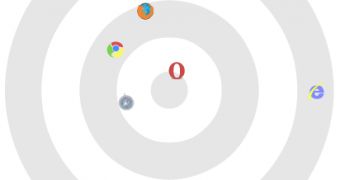JavaScript performance has been a common bragging theme for web-browser makers lately, but, as everyone is racing to make their browser faster, they easily lose focus of the fact that JavaScript also has to be interpreted accurately, not only fast. Last summer, Google launched a set of JavaScript conformance tests bundled together under the name Sputnik. Now, the developers are making it easier for everyone to actually use the tests by making the entire suite available inside the browser.
"Last June, we launched the Sputnik JavaScript conformance test suite, a comprehensive set of more than 5000 tests. Today we're releasing a test runner for Sputnik, that allows you to easily run the complete test suite from within your browser," Christian Plesner Hansen, software engineer at Google, wrote.
"Sputnik touches all aspects of the JavaScript language defined in the 3rd edition of the ECMA-262 spec. In many ways, it can be seen as a continuation of and a complement to existing browser conformance testing tools, such as the Acid3 test. While we are always focused on improving speed, Sputnik is not about testing how fast your browser executes JavaScript, but rather whether it does so correctly," he explained.
The top five web browsers in Sputnik
And what better way to launch the new test runner than by showing how the five main web browsers performed under it. Now, the test suite has been developed by Google and the test results are coming from the very same source, so you have to take that into consideration. However, the results themselves indicate that they're not biased as much as anything else.
According to Google's own testing, Chrome manages to come in only at number three when it comes to JavaScript standard compliance. In fact, the winner is a bit unlikely. The Sputnik test suite shows that Opera 10.50, the latest stable version of the browser, comes closest to hitting the mark of 0 failed tests. Opera failed at only 78 of them, which looks like a lot at first glance, but this is out of more than 5,000 tests in total.
The runner-up is also a bit surprising, Safari 4 takes the number-two spot with 159 failures. Chrome 4 came in third with 218 failures, followed by Firefox 3.6 with 259 failures and Internet Explorer with 463. Google also provided a nice visualization of the results of the tests with a bulls-eye showing how close each of the browsers came to the ideal 0 failures, but also how many of the failed tests were shared by placing the icons closer together or further apart. You can run the tests yourselves here.

 14 DAY TRIAL //
14 DAY TRIAL //